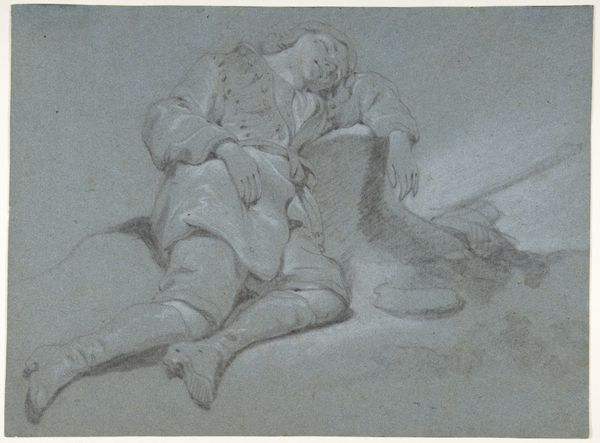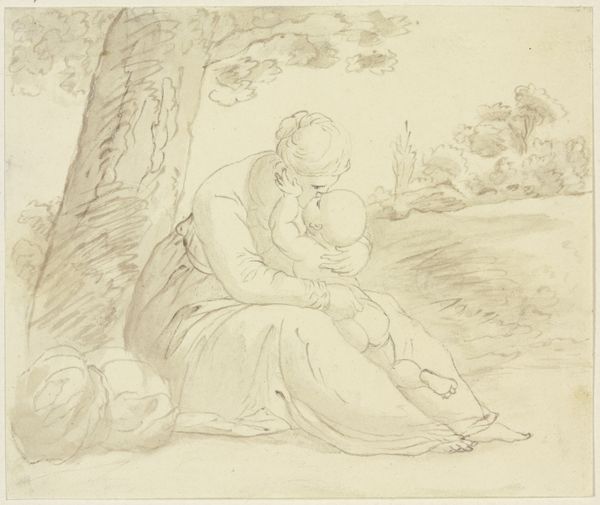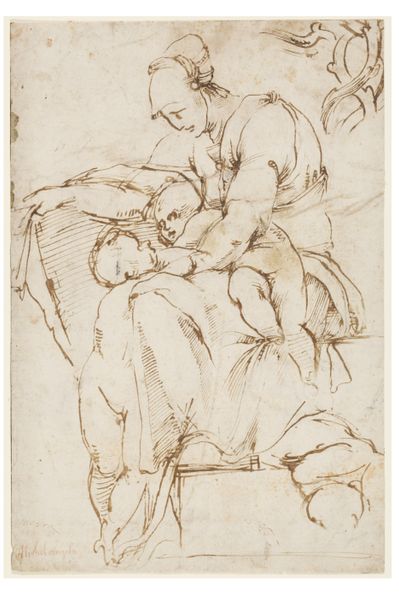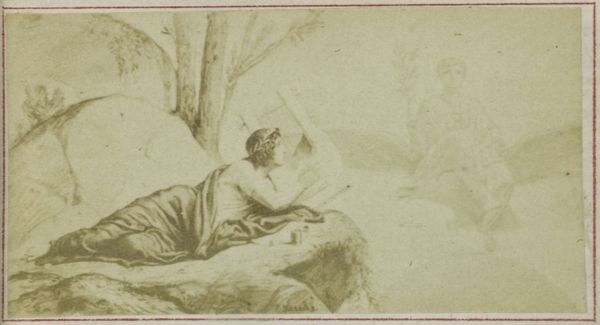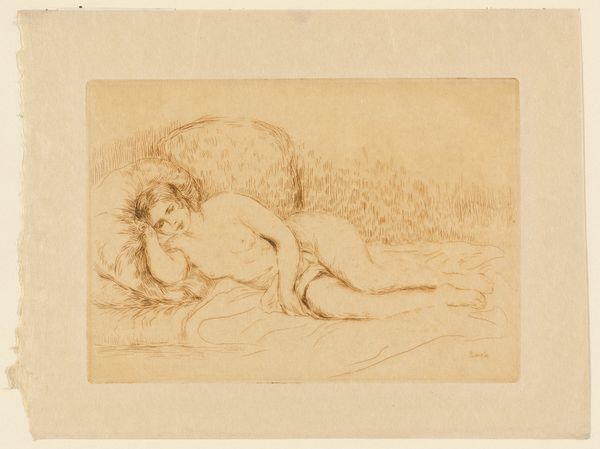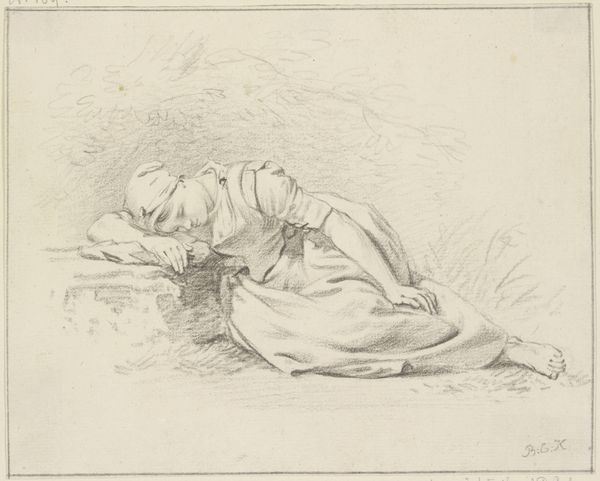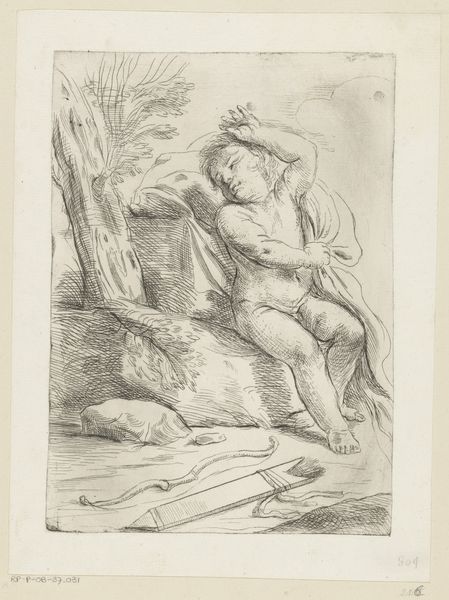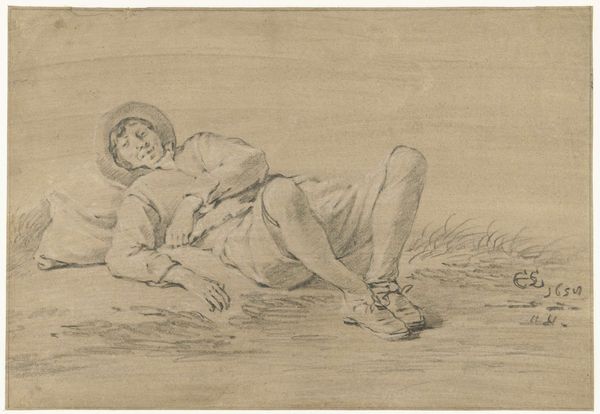
Liegender Knabe, auf den rechten Arm gestützt, vor ihm liegt ein Stock
0:00
0:00
drawing, red-chalk, paper, dry-media, pencil
#
portrait
#
drawing
#
red-chalk
#
landscape
#
paper
#
dry-media
#
pencil
#
15_18th-century
Copyright: Public Domain
Editor: So, this is Ferdinand Kobell's "Liegender Knabe, auf den rechten Arm gestützt, vor ihm liegt ein Stock," a red chalk drawing on paper, likely from the 18th century, housed here at the Städel Museum. It feels… simple, almost like a fleeting moment captured. What do you see in this piece, beyond the immediate subject matter? Curator: Precisely. Focusing on the formal elements, observe how the artist utilizes the red chalk. The subtle gradations of tone create depth and volume. Note how Kobell uses cross-hatching, not to render realistic textures necessarily, but to build up shadow and delineate form. Editor: I see that. It’s not trying to be hyper-realistic. It's more about…the suggestion of form, right? Curator: Yes, a concentration on the very essence of representation. Look at the figure’s pose; how does the artist guide our eye through the composition? The diagonal of the body against the horizontality of the landscape… Consider how this structure creates a visual tension and affects the way we perceive balance and repose. Is the boy at rest, or simply paused in anticipation of some movement? Editor: Hmm, interesting. So it's less about what the boy IS doing and more about how the artist uses lines and shading to make us feel a certain way. The implied motion even though he's lying down is what makes it engaging? Curator: Indeed. Through the masterful manipulation of the medium and compositional strategies, Kobell transcends the simple depiction of a resting boy, prompting deeper reflection on the nature of form and perception itself. It seems deceptively simple but contains immense formal complexity. Editor: That’s a very different way of thinking about it than I was expecting! It is like he is challenging us. Thanks for illuminating the complexities here.
Comments
No comments
Be the first to comment and join the conversation on the ultimate creative platform.
